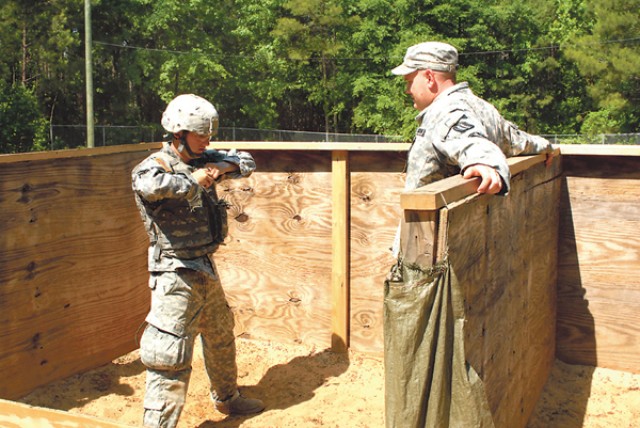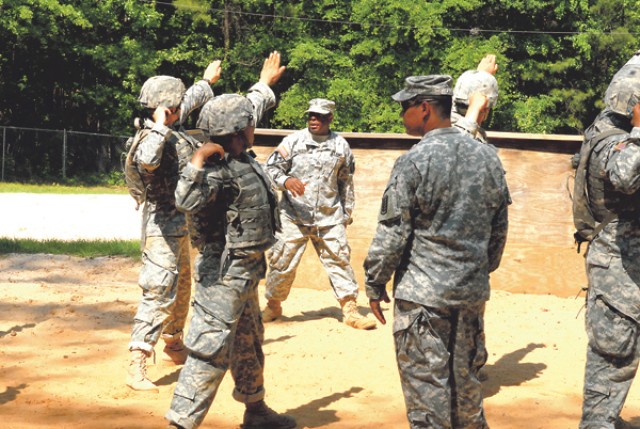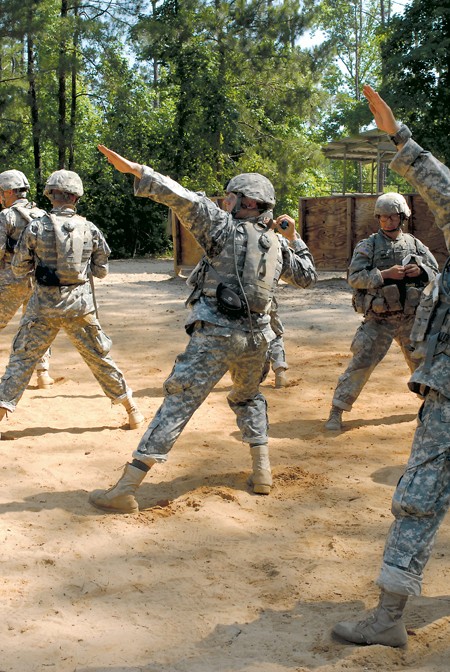After spending the morning throwing practice hand grenades May 24, PVT Carlos Urbina said the training took on a new meaning when he threw a live grenade.
"We started with the fake grenades, and it wasn't too complicated," Urbina said. "But when we went down the range with the live grenades, that's when my heart started beating. I started hearing the booms and seeing things blowing up, and that's when I said, 'This is real.'"
Urbina and the nearly 200 other Soldiers in C Company, 1st Battalion, 50th Infantry Regiment, were at Malone Range 1 to complete the hand grenade training, a requirement for all basic trainees. The Soldiers were starting week 11 of training.
Nineteen-year-old PVT Kyle Byrne, a Seattle native, said both the Georgia heat and the new military lifestyle have taken some getting used to.
"Throwing grenades isn't a day-to-day thing we do back home," he said. "There's a little bit of fear factor involved, but this is my sacred duty."
SFC Ted Schwinn is the noncommissioned officer in charge of the range and its 19 instructors who train nearly 100 companies each year. He said the nerves are natural because of the risks involved.
"If you're using a hand grenade, it's up close and personal," he said. "The enemy will be within 35 to 40 meters, and because the enemy is that close, you better know what you're doing."
The Soldiers spend the day learning the correct techniques, with training divided into two sections.
Soldiers practice with simulated grenades during the morning and, once they have qualified, move on to live grenades. They are taught the proper arming and throwing technique and to rock back and throw the hand grenade up and out more than 30 meters.
Once they release the device, which has three safety features, they immediately go down on their knee.
Soldiers throw three to five practice grenades to qualify for the live M67 fragmentation grenade, which has a kill radius of 5 meters.
Company 1SG Jasper Johnson said each Soldier must throw two live grenades before graduating.
"It is important because a Soldier has to be confident," he said. "They have to be familiar with and understand the device and how it works."
In combat, he said, hand grenades are often used to take out hiding enemies.
"If you can't put direct fire on the enemy because he's behind something, you can use one of these and still eliminate the enemy," he said. "But it could be catastrophic if you make a mistake."
So avoiding mishaps is crucial, and the trick to doing so is all in the training, said Urbina.
"I got a little nervous, but you just keep your composure, do what you're taught, and you won't find your face in the ground," he said.
And despite the risks of the May 24th training and his future missions, the basic trainee is looking forward to a productive military career.
"Every risk has its rewards," he said.










Social Sharing